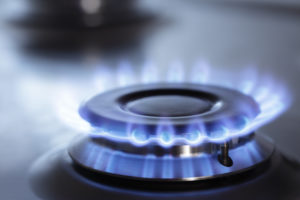 Natural gas fell for a third straight day to hit the lowest level in eight months as US inventories continued to expand at higher-than-expected rates on the back of mild weather across most of the US high-consuming areas.
Natural gas fell for a third straight day to hit the lowest level in eight months as US inventories continued to expand at higher-than-expected rates on the back of mild weather across most of the US high-consuming areas.
On the New York Mercantile Exchange, natural gas futures for settlement in August fell by 1.87% to $3.877 per million British thermal units, having shifted in a daily range between $3.893 and $3.853 per mBtu. The energy source slid by 0.08% on Friday to $3.951, closing the week 4.7% lower, and extended the previous two five-day periods combined decline of 6.5%.
Natural gas extended its downward momentum as mild weather across most of the high-consuming US areas warranted a larger-than-projected jump in nationwide natural gas stockpiles. The Energy Information Administration reported on Thursday that inventories added 107 billion cubic feet (bcf) in the seven days through July 11th, exceeding anticipations for a rise in the range between 95 and 103 bcf. Total gas held in underground US storage hubs equaled 2.129 trillion cubic feet, narrowing the deficit to the five-year average to 25.5%, down from a record 54.7% at the end of March. Gas levels were 22.2% lower from a year earlier.
Despite the large deficit, however, sentiment remained bearish as the government agency expects stockpiles to be fully replenished before the start of the winter heating season. According to EIA’s July 8 Short-Term Energy Outlook, inventories should rise to 3.4 trillion cubic feet by the end of October. Half way through the refilling phase, net injections have averaged 87 billion cubic feet per week, exceeding the needed amount by 10 billion cubic feet.
Weather outlook
According to NatGasWeather.coms July 21st – July 27th weather forecast, temperatures over much of the northern US are expected to rise into the high-80s and low-90s through the middle of the week, while the southern parts of the country will see readings peaking at between 90 and 100 degrees Fahrenheit. However, the widespread high temperatures will quickly give way to cooler conditions as another Canadian cool blast will lower readings in the northern and central US late this week. The northern US will see showers, thunderstorms and below-average temperatures during the upcoming weekend, while the western and southern parts of the country will enjoy seasonal or little-above-seasonal readings, except for the Pacific Northwest and the immediate coast.
For the interval between July 28th and August 3rd, NatGasWeather.com predicted that several cool blasts carrying showers, thunderstorms and below-normal temperatures, will track across the Midwest and Northeast. Readings across the South are also expected to drop by a few degrees, the weather agency said.
According to AccuWeather.com, the high in New York on July 24th will be 84 degrees Fahrenheit, matching the seasonal, but readings will drop to as much as 6 degrees below the average between July 28th and August 1st. Chicago will see temperatures dropping to as much as 73 degrees on July 23rd, 11 below the usual, and will remain 2-9 beneath normal through July 31st.
To the South, Houston will see temperatures peaking at 95 degrees Fahrenheit on July 24th, 1 degree above the average, and readings are projected to remain at these levels through July 29th. A brief cool period is expected between July 30th and August 2nd, when readings will be 5-9 degrees below the usual. On the West Coast, the high in Los Angeles will be 80 degrees Fahrenheit, 4 beneath the average, and except for a couple of brief periods will remain beneath normal through August 5th.
Technical view
According to Binary Tribune’s daily analysis, in case natural gas for settlement in August penetrates the first resistance level at $3.973 per million British thermal units, it will encounter next resistance at $3.996. If breached, upside movement will probably attempt to advance to $4.015 per mBtu.
If the energy source drops below its first resistance level at $3.931 per mBtu, it will see support at $3.912. If the second key support zone is breached, the power-station fuel’s downward movement may extend to $3.889 per mBtu.





